Browse Primary Sources
Locate primary sources, including images, objects, media, and texts. Annotations by scholars contextualize sources.
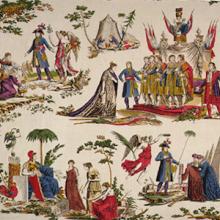
Printed Cloth of the Directory and Napoleon
This image presents an idealized version of Napoleon during the Directory, especially his intellectual contributions. In the upper right corner he appears before the Directory. Along the right bottom, Napoleon clearly confronts the Middle East, both its Egyptian Pyramids and Christian elements, as three wise men bow before him.
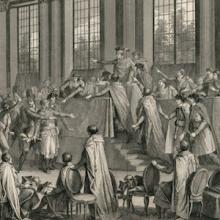
Day of Saint-Cloud
The problems of the revolutionary government had so intensified that the two leaders, Abbé Sieyès and Roger Ducos, plotted to overthrow it with the help of the most famous military man of the day. But the legislative body, particularly the lower house, proved resistant. Napoleon needed the help of his younger brother Lucien to rally the troops and erase the opposition.
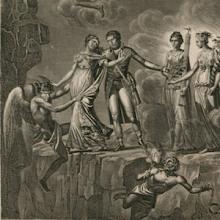
The Saving of France
In this propagandistic allegorical engraving, Napoleon saves the female figure of France from the abyss to which she has been led by "revolutionary fanaticism." The figure of fanaticism is armed to the teeth with "the daggers of party spirit" and holds in one hand the chains of slavery and in the other the torch of discord.

Scene of Directory Life, Men and Women from L’Optique du Jour
After Jacobin control faded, with its repression of exuberant social life as well as political diversity, the following years saw a rebirth of open pleasures. This image focuses on fashionable men and women enjoying the good life. Some contemporaries would see this as excessive and self–indulgent, and far bolder displays of sexuality and materialism.

Execrable Human Traffick, or The Affectionate Slaves
This reproduction of a painting by George Morland (1789) has lurid colors and shows the sale of an enslaved person. The artist suggests that friends or relatives are being separated, as one of the slaves is being physically restrained as the other enslaved individual is being forced into a boat.
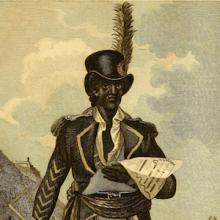
Toussaint L’Ouverture
A slave inspired by the French Revolution’s egalitarianism, Toussaint saw himself as French and struggled for French control of the island of Saint Domingue. Nonetheless, he had no intention of letting whites rule, for he wanted blacks to control their own destinies. By 1801 he had conquered the entire island for France and for his fellow slaves.
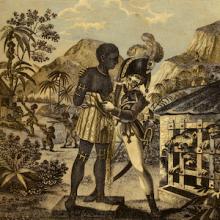
The Mode of Training Blood Hounds in St. Domingo
This image reveals grotesque mistreatment of blacks even during training exercises. Here a French cavalryman (chasseur) plans to use someone as a live prey for hunting dogs.
This source is a part of the The Napoleonic Experience teaching module.
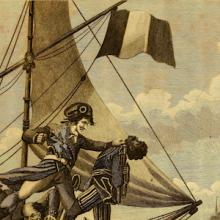
The Mode of Exterminating the Black Army as Practised by the French
The fighting between the French and the Haitians was very bloody. When the French tried to put down Toussaint in 1802, it took them some five months with an expeditionary force of 23,000. Supplied by locals, the French seized the towns, gradually extending their control to the countryside. Eventually they even captured L’Ouverture but never could quell the uprising.
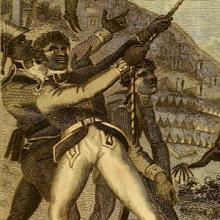
Revenge Taken by the Black Army for the Cruelties Practised on Them by the French
This execution in Haiti simply suspends the French officer in the air, slowly strangling him to death. His struggles, emphasized by the convulsing legs, reveal the hatred visited on opponents, themselves guilty of so many atrocities.
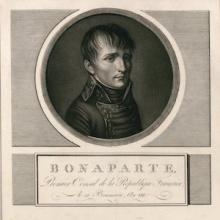
Bonaparte, First Consul of the French Republic
From the beginning it was clear that Napoleon’s political support was closely tied to his fortunes in war. This engraving celebrates the victory over the Austrians at the battle of Marengo in Italy, June 1800. In fact, he almost lost this battle, but government propaganda rarely mentioned any such problems.
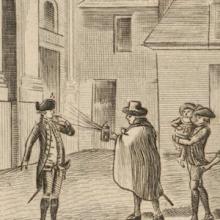
Image of the King’s Departure
This engraving depicts the King, his wife, and his children meeting at half–past midnight on 21 June 1791, about to board a carriage in which they will flee secretly from Paris toward the border. The King and Queen were poorly disguised as servants to a German noblewoman.
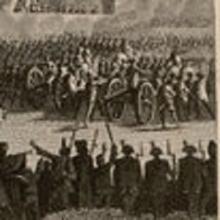
Return from Varennes, Arrival of Louis Capet in Paris
Following his arrest, Louis and his family are returned to Paris. Large, silent crowds looked on disapprovingly.
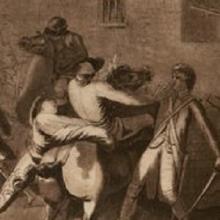
Fleeing by Design or the Perjurer Louis XVI
Another engraving of the King’s arrest portrays the guard apprehending Louis and his family in their flight from Paris in June 1791. From Varennes, the royal family is brought back to Paris accompanied by three deputies of the National Assembly, armed guards, and a sometimes angry crowd.
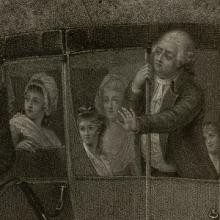
Louis XVI Stopt in his Flight at Varennes
This romantic English painting of the King’s flight suggests only a few feet separated the King from escape.
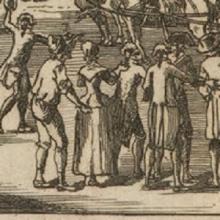
Arrest of the King at Varennes, 22 June 1791
These images, all engraved and widely circulated years after the event, show four different moments of the arrest. Each successive image renders the scene increasingly dramatic. The first, a woodcut executed shortly after the event, shows the postman alone recognizing the King.
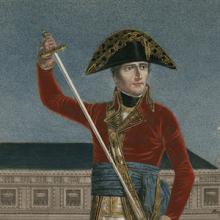
Bonaparte, First Consul, Putting Away His Sword after the General Peace
The engraving celebrates the peace treaties of 1801 and 1802. The lack of perspective in this image reflects the vision that Napoleon wanted the French to have when they thought about his actions. Making peace proved to be one of Napoleon’s more popular decisions.
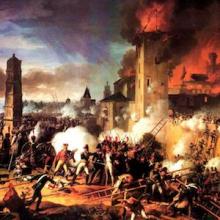
Battle For and Taking of Ratisbon, April 23, 1809
The general peace agreement lasted a scant two years after the treaty of 1801. Although unable to seriously threaten an occupation of the British Isles, Napoleon was very successful on the continent, launching major wars into Austria, Prussia, Spain, and Italy until overreaching into Russia in 1812. The attack on Ratisbon was a key part of a struggle against Austria.
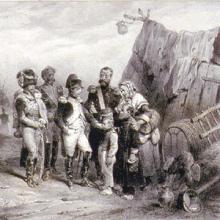
Sire, They Are My Sons and My Wife
Napoleon cultivated the intense personal loyalty of his troops with engravings like this one, which suggests a personal interest in the ordinary soldier.
This source is a part of the The Napoleonic Experience teaching module.

Meeting of the Emperors at Tilsit
In July 1807, Napoleon and Alexander agreed to cooperate. Napoleon used this strategy to prevent his enemies from forming an alliance against him.
This source is a part of the The Napoleonic Experience teaching module.

The Royal and Imperial Family of Napoleon
The remainder of the text on this image reads: Emperor of the French, King of Italy, and Protector of the Confederation of the Rhine. The military flags make clear the connection between military conquest and imperial glory.